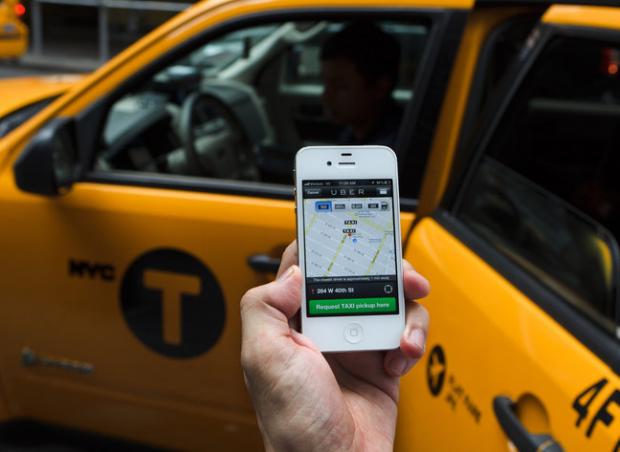Regulators around the country are looking to shut down an innovative startup that provides on-demand taxi and limousine services at the push of a button. The fight may seem novel, given the technologies at hand, but there are some bedrock economic principles at play.
On one side of the fight is Uber, a company that partners with limo companies and allows riders to request cars using its iPhone app. On the other are bureaucrats looking to crush the disruptive technology.
Regulators’ complaints about Uber are legion, but Matthew Daus, the former chairman of New York City’s taxicab commission and president of the International Association of Transportation Regulators, voiced a common grievance in a recent New York Times profile of Uber and its discontents.
“New Yorkers deserve an apology from Uber for price-gouging them during the hurricane,” Daus told the Times, in reference to Uber’s “surge pricing,” enacted in the wake of superstorm Sandy.
Surge pricing goes into effect during periods of high demand for Uber’s product. Prices were doubled after Sandy, but have in other instances increased by as much as 625%. While that means a harder financial hit for riders, Daus’s complaint is economically naive.
Uber has gone to great lengths to explain its surge pricing rationale on its website. The price spikes, the company claims, allow it to both attract more drivers to areas with high demand for rides, and ensure that rides are available for people who need them most.
The company has worked to make its surge pricing system transparent. Riders who request Uber pickups during periods of high demand are notified that surge prices are in effect – and told how much fares will be marked up – and can decline pickups accordingly.
“Without a surge pricing mechanism, there is no way to clear the market,” explained Uber CEO Travis Kalanick in January, “Fixed or capped pricing, and you have the taxi problem on [New Years’ Eve]—no taxis available with people waiting hours to get a ride or left to stagger home through the streets on a long night out.”
While the storm that ravaged New York City last month was obviously more severe than heavy New Years Eve traffic, the same economic logic applies.
Uber doesn’t actually own any vehicles. It works with existing limousine companies, who use the company’s iPhone app to find passengers. In other words, Uber depends on drivers’ willingness to work with them.
As the company explained in the wake of its Sandy price hikes, “raising the price is the only sustainable way to maximize the number of rides and minimize the number of people stranded – by providing a meaningful incentive for drivers to come out in undesirable conditions.”
“Doubling drivers’ fares tripled the number of cars on the road and kept them out there far longer,” Edward Casabian, Uber’s New York City community manager, explained. “Without Surge Pricing, Uber would become essentially unusable this week.”
On the demand side, prices also lead to more availability by discouraging requests for Uber rides. A potential passenger with transportation alternatives might decline a highly-priced Uber in favor of some other mode of transit, meaning more availability for riders without those alternatives.
The company places a premium on availability, so that element is key to its success. “When we start seeing a shortage in supply, we raise the price,” Kalanick told potential riders on the social network Quora. “We continue to raise the price until demand begins to wane. Assuming we raise price quickly enough to maintain healthy supply, there will always be an Uber ride available.”
The company’s firm grasp of basic economics provides a stark contrast to Daus’s emotional critique. But Uber’s detractors may be driven as much by regulatory capture as by objections to the company’s pricing model.
In Washington D.C., where the city government has been particularly hostile to the startup, regulatory objections to Uber have been explicitly rooted in the company’s competitive success (i.e. regulators object because Uber would deal a blow to the city’s taxi industry. Other cities have adopted a similar posture).
Those two critiques – that Uber price-gouges and that it represents an unfair competitor – are telling in their contradictions. On the one hand, the company’s critics say it charges too much for its services, and on the other, they say it’s such an attractive service that it threatens to put traditional taxis out of business.



























